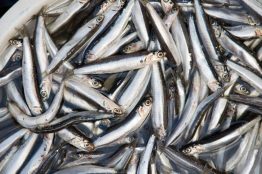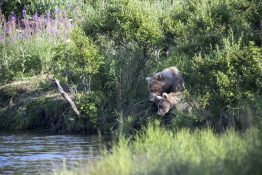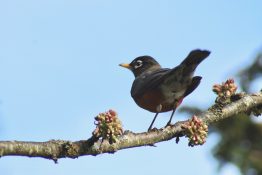Marine life off the West Coast, from Mexico up through Canada, inhabit the California Current. The cool, nutrient-rich water supports life from invisible phytoplankton to the economically important salmon, rockfish and Dungeness crab to the majestic orcas. A new study led by the University of Washington finds that the animals’ ability to breathe in that water may be key to where and when they thrive.
Read more at UW News »Just how sustainable is a fish burger?
“I’m an environmentalist, does that mean I should stop eating fish?” What began as an innocent question from a coworker worried about their environmental output sparked research that ultimately led UW School of Aquatic and Fishery Sciences Professor Ray Hilborn to answer the question: Just how sustainable is the fish burger? The short answer is very. After collecting data at the Alaska Salmon Program (specifically Bristol Bay and Prince William Sound), Hilborn found that Alaskan net fisheries have particularly low greenhouse gas usage, especially when it comes to sockeye salmon, pink salmon and pollock.
Read more »Sockeye salmon fuel a win-win for bears and people in Alaska’s Bristol Bay
In a world where valuable natural resources can be scarce, nature often loses when humans set their sights on something they want. But a new study published in the journal Ecological Applications shows that doesn’t always have to be true. Researchers found that with proper management of salmon fisheries, both humans and bears — who depend on a healthy supply of the fatty, oily fish — can thrive.
Read more »Community science project tracks changes in bird behavior during coronavirus
The predictable, daily routines of humanity have all but stopped with the arrival of COVID-19. For most of us, we no longer head to the office each morning or have friends and family over for dinner in our homes. Our day-to-day activities now look entirely different than they did six weeks ago. But does this abrupt change only apply to us bi-pedaled mammals?
Read more »Polar bears in Baffin Bay skinnier, having fewer cubs due to less sea ice
Polar bears are spending more time on land than they did in the 1990s, due to reduced sea ice, new University of Washington-led research has found. Bears in Baffin Bay are getting thinner and adult females are having fewer cubs than was recorded at times when sea ice was more available. The new study published in Ecological Applications compares polar bear satellite tracking and visual monitoring data from the 1990s with more data collected in recent years.
Read more at UW News »





